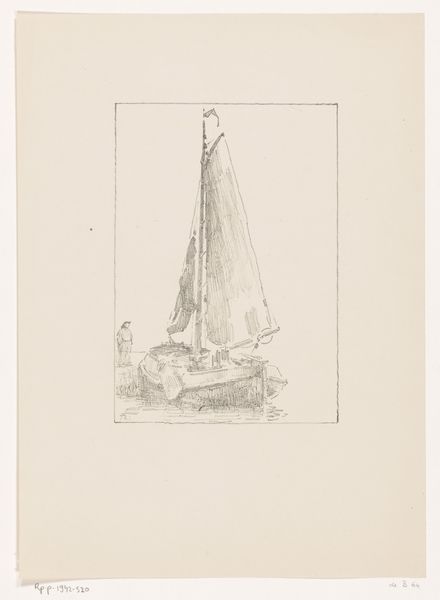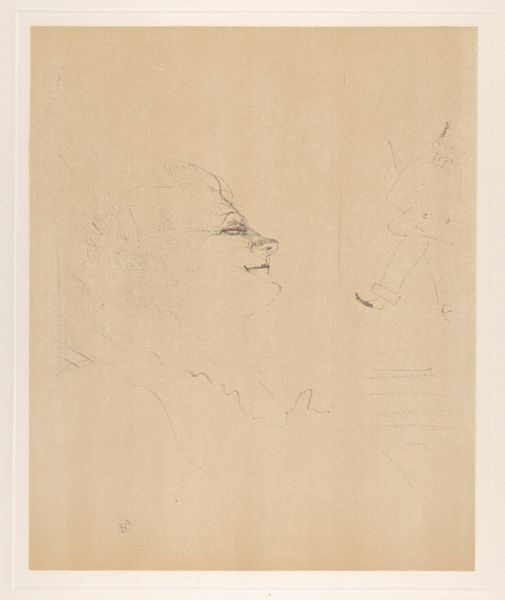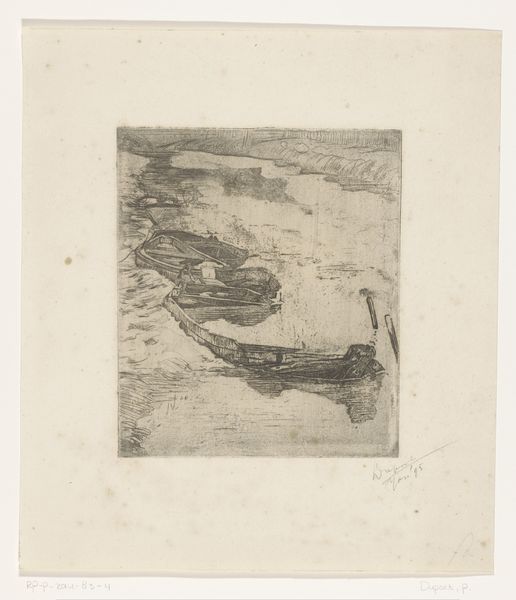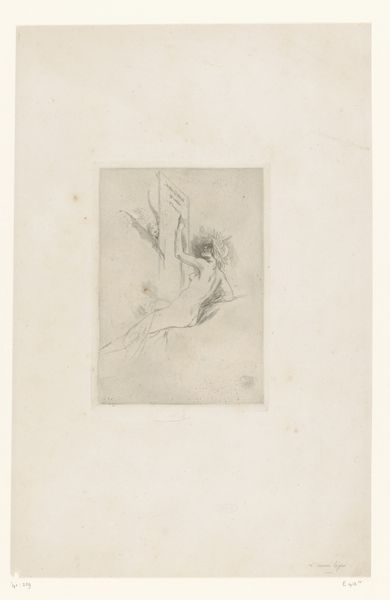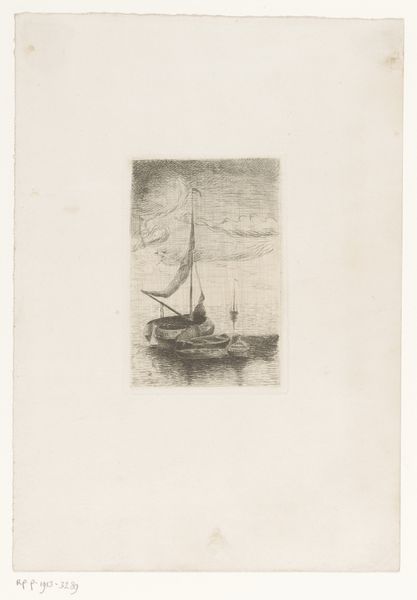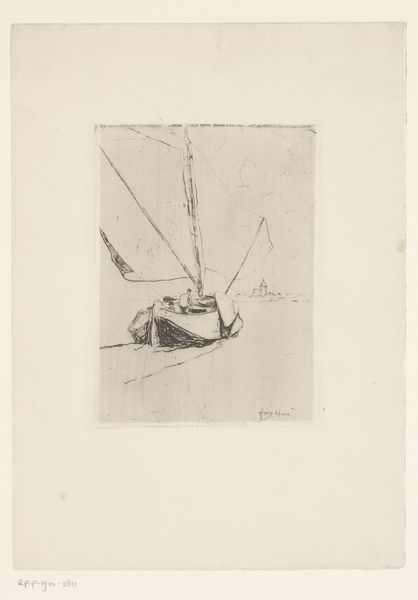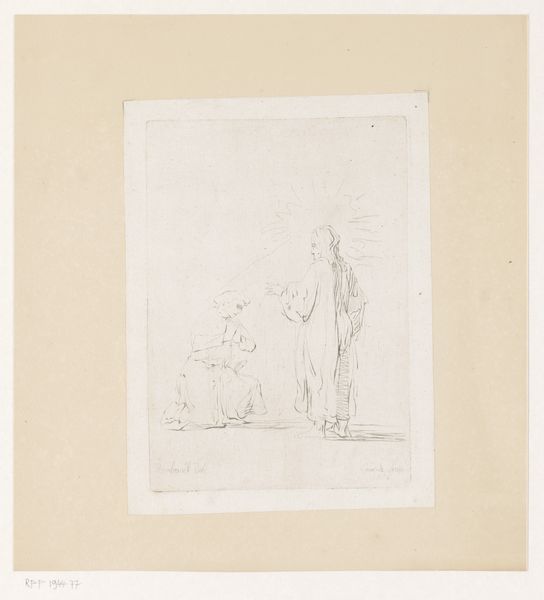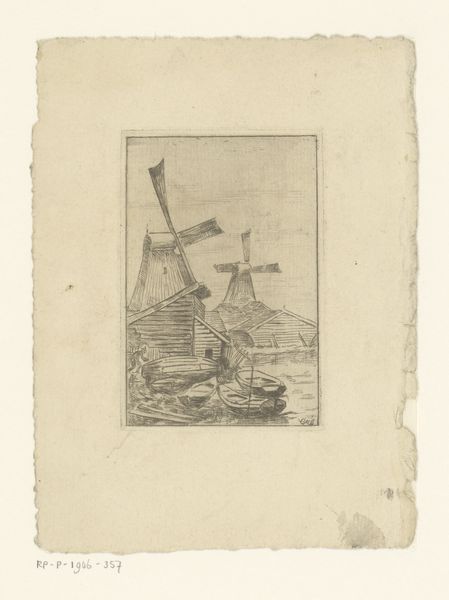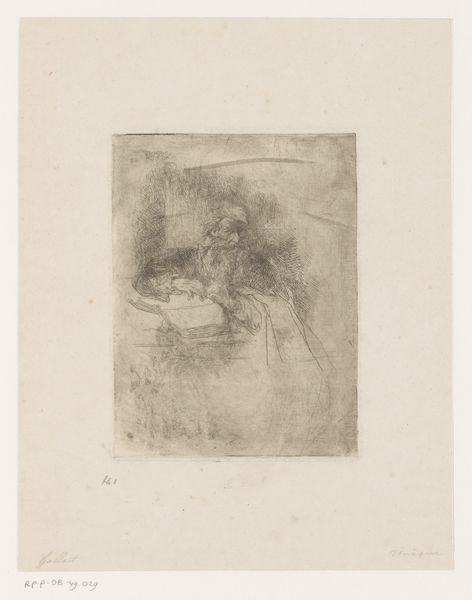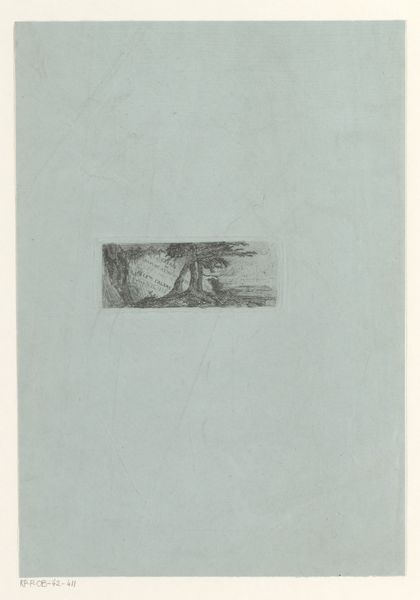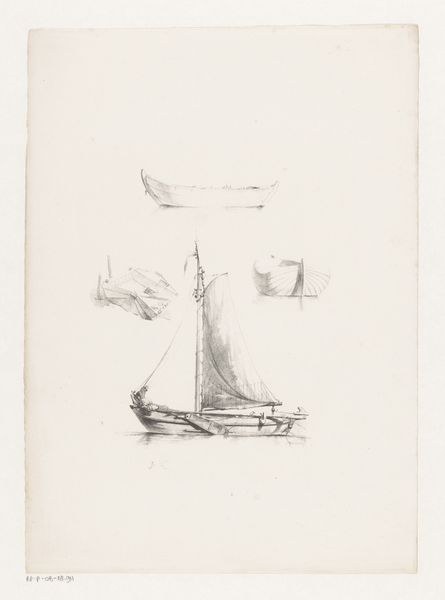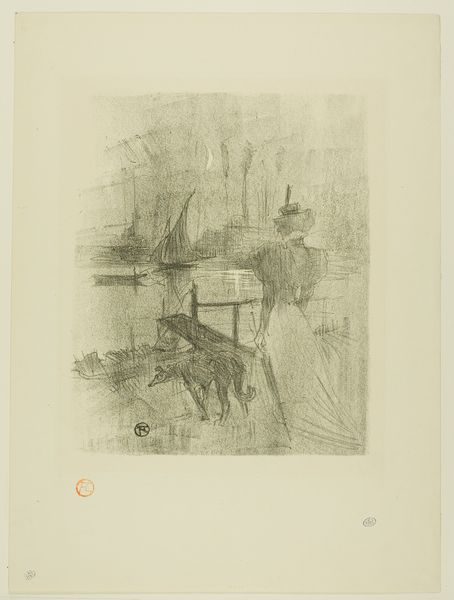
drawing, paper, ink
#
drawing
#
impressionism
#
landscape
#
paper
#
ink
Dimensions: height 193 mm, width 158 mm
Copyright: Rijks Museum: Open Domain
Curator: This delicate drawing, “Zeilboten aangemeerd langs een kade,” or "Sailboats Moored Along a Quay" was rendered in 1881 by Maurice Hagemans. What are your initial thoughts? Editor: There’s a ghostly quality to it. Fleeting. Almost as if the boats are fading back into the paper itself. I notice it’s quite small, a study perhaps? Curator: Likely. These quick studies were crucial for Impressionists trying to capture transient effects of light and atmosphere. Hagemans was very much working within the stylistic language of Impressionism, focusing on this light. Editor: I can see that, particularly in how he’s handled the water. It’s not just reflecting; it’s actively blurring and distorting the forms. And just from ink on paper! Do you know where the paper itself came from? What type of ink? The labour practices involved with paper and ink manufacture at the time would speak volumes to understanding the context this work emerged from. Curator: Those details could reveal fascinating connections to the industrial expansion of the period. We often see depictions of leisure activities like sailing as divorced from the labor that made them possible. And indeed, these images provided something new for the emerging bourgeois class. Editor: Right, who has the leisure to sail, to observe, to draw, to look? The quick marks are efficient. Meant for speed. This reflects a rapidly industrializing society and all its problems of wealth disparity. I also wonder, would the working sailors recognize themselves or their labour in such artwork, and is the intended audience wealthy, like the artist? Curator: An interesting perspective on the politics of viewing and artistic representation. While his art career developed in this moment, later on Hagemans dedicated himself almost exclusively to writing theatre reviews for L'étoile Belge which can also be seen as a development of public thought. Editor: Absolutely! Considering the artwork’s placement within socio-political contexts, and analysing labor in material production really makes it a compelling historical object. It speaks beyond a tranquil scene, towards a complex network of materials, labour and viewers! Curator: Precisely, these ink traces offer a view on the era, far beyond a harbor scene.
Comments
No comments
Be the first to comment and join the conversation on the ultimate creative platform.
